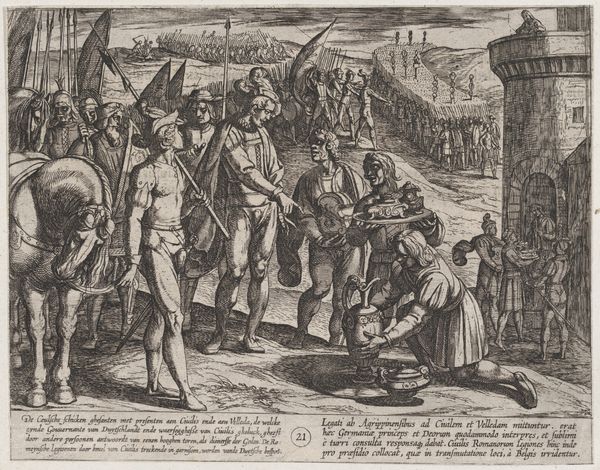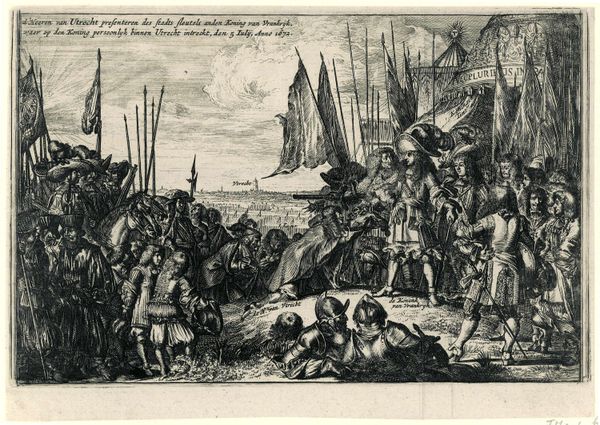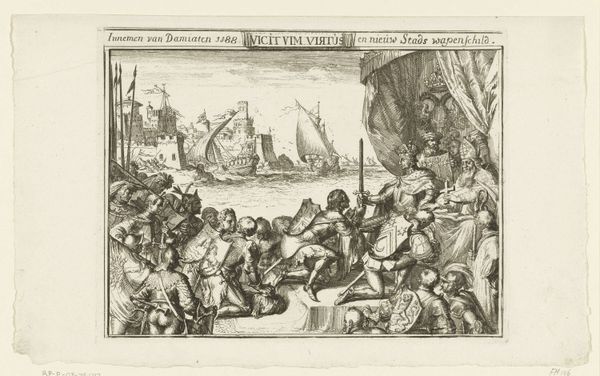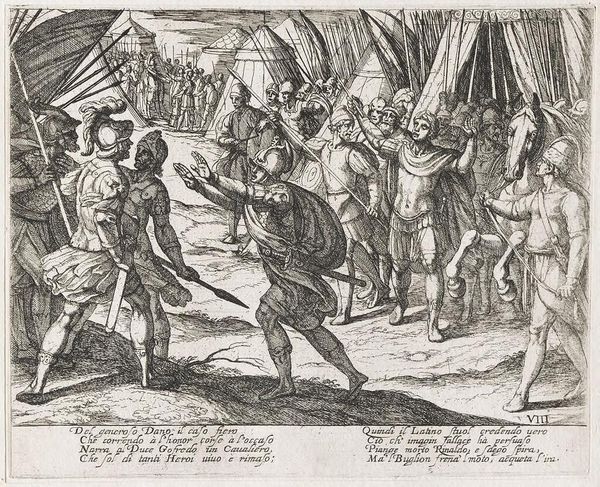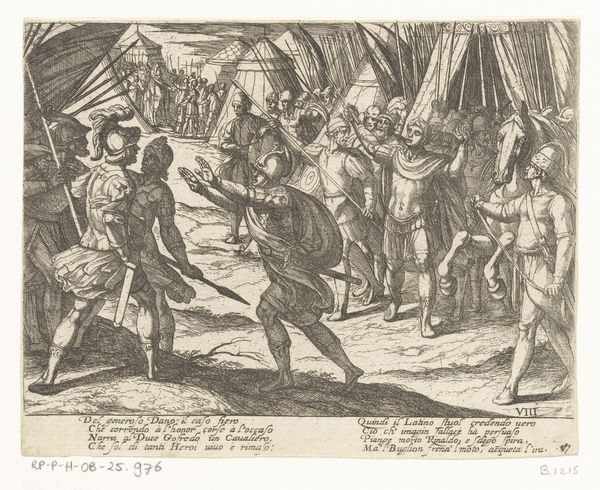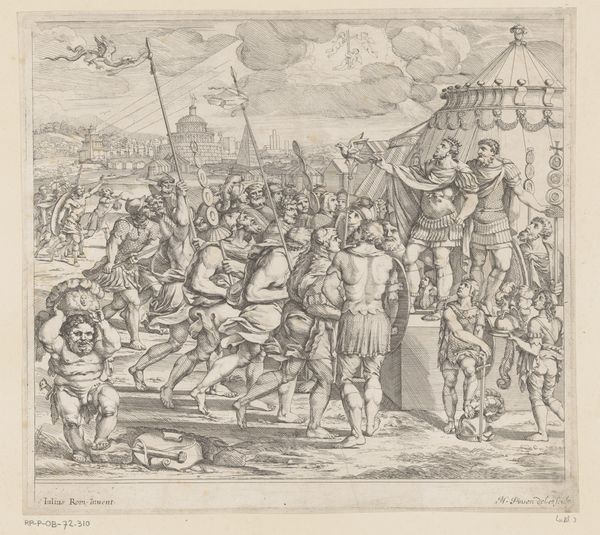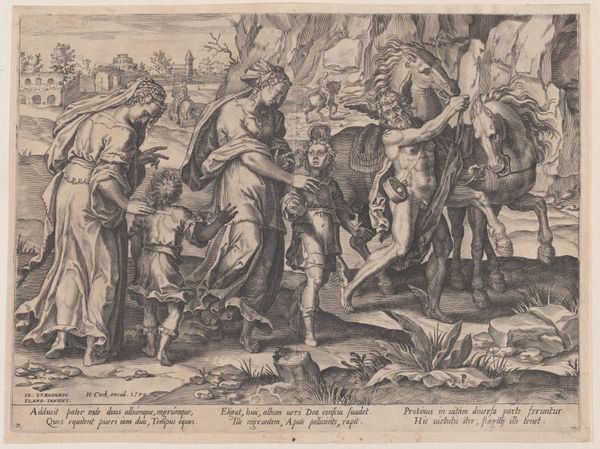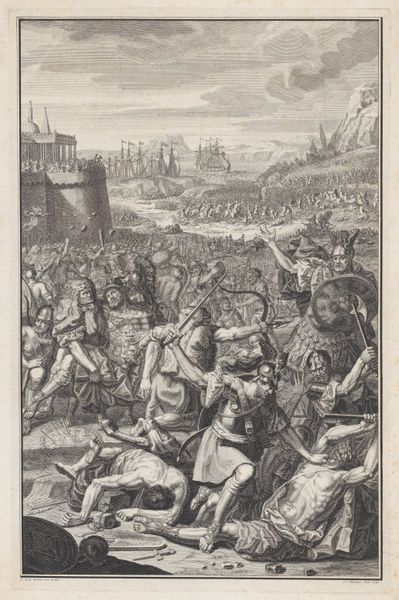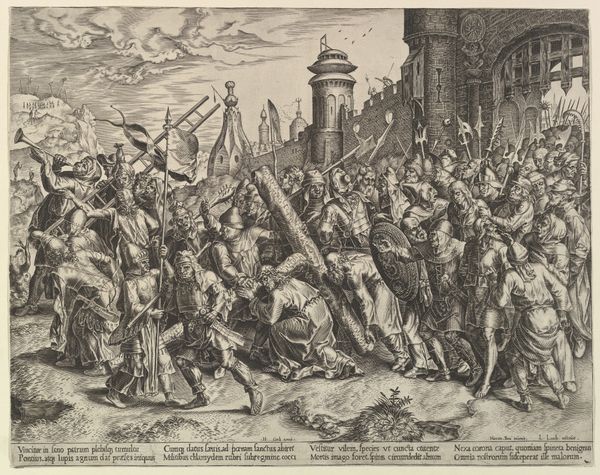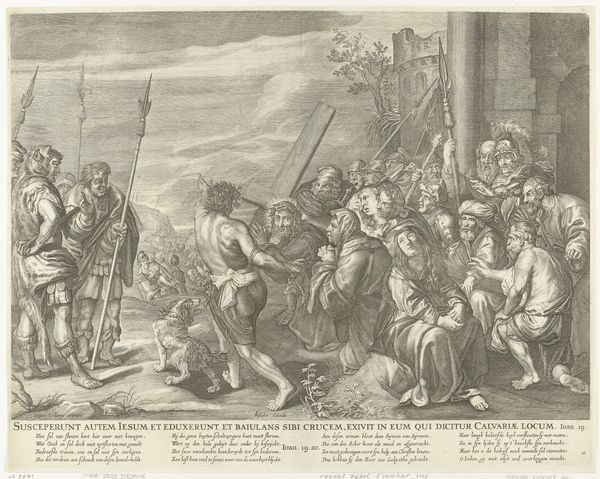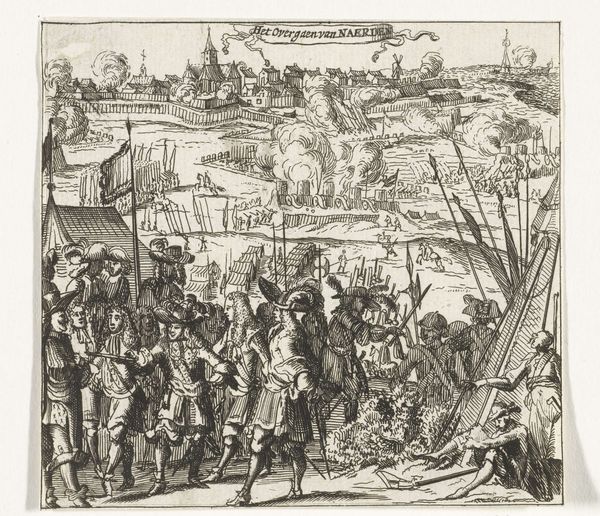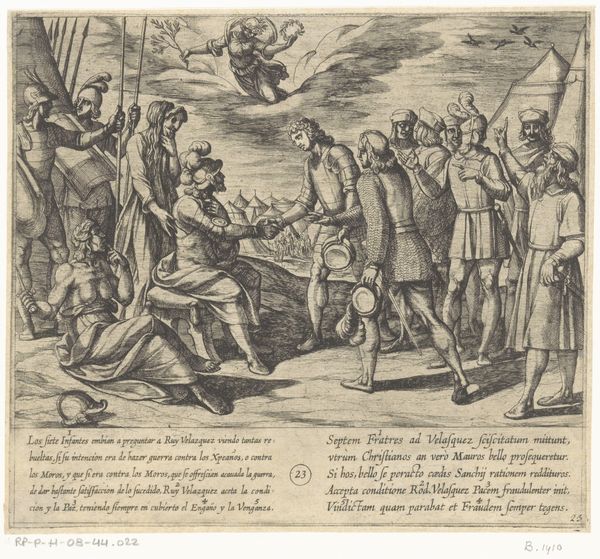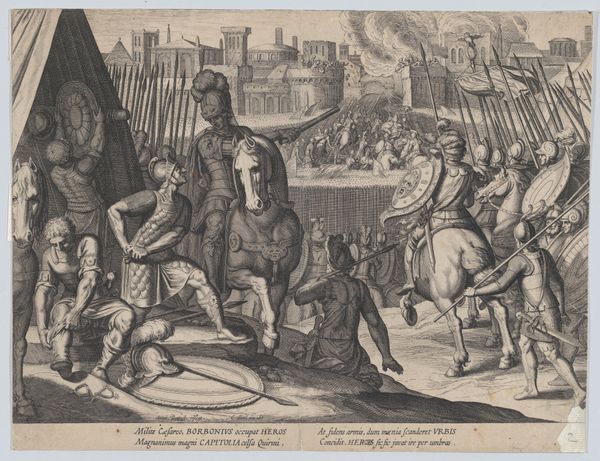
print, engraving
#
narrative-art
# print
#
figuration
#
line
#
history-painting
#
northern-renaissance
#
engraving
#
realism
Dimensions: height 156 mm, width 230 mm, height 225 mm, width 305 mm
Copyright: Rijks Museum: Open Domain
Editor: Here we have “Conquest of Tunis, 1535, No. 7,” an engraving by Dirck Volckertsz Coornhert from around 1555. It depicts a chaotic scene of soldiers on horseback battling outside city walls. It's very detailed, almost overwhelmingly so. What grabs your attention most when you look at this print? Curator: It’s true, there's so much to unpack, isn't there? For me, beyond the sheer busyness of the image, it’s the meticulous rendering of detail. Look at the way Coornhert depicts the textures of the armour, the musculature of the horses… you can almost feel the weight and tension of the battle. He really evokes this historical moment. The way the figures fill up all available space makes me feel like the battle is raging, and almost overwhelming the viewer! Does that make sense? Editor: Absolutely. It's interesting how the Northern Renaissance style blends with realism to portray a specific historical event. I hadn’t noticed how overwhelming that felt before, but I totally see what you mean now that you've mentioned it. Curator: Exactly! But that almost chaotic realism probably gave a sense of…well, "authenticity", a sense of "being there," to audiences at the time. Given this, do you think Coornhert aimed to just capture the raw energy of a conquest or celebrate military power? Editor: I suppose a bit of both. The triumphant figures suggest celebration, but the fallen horses introduce some chaos to it. It might depend on who commissioned it, right? I also noticed the text at the bottom, I wonder who was able to read it then. Curator: Precisely. Someone, somewhere, commissioned Coornhert for it. Maybe someone wanted propaganda; maybe an aesthetic decoration. We will never know, for certain. But looking more closely at the piece allows us to generate questions about intention and meaning. And maybe it even gets us thinking about battles differently too.
Comments
No comments
Be the first to comment and join the conversation on the ultimate creative platform.
